1. India’s Indigenous Democratic Traditions – Revisiting the Chola-Era Electoral Legacy – Polity
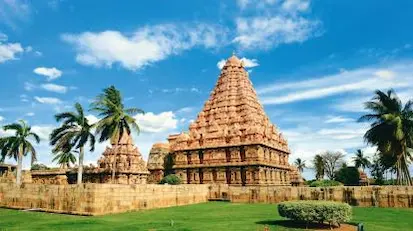
Why in News?
On July 27, 2025, Prime Minister Narendra Modi, during his address at Gangaikonda Cholapuram, emphasized that India’s democratic traditions predate colonial influence and even the Magna Carta (1215). This has renewed interest in ancient Indian democratic systems, particularly the Chola-era electoral practices.
Background & Context
- The modern Indian democracy is often seen as a colonial inheritance, but India’s own history reflects deep democratic values embedded in local self-governance, electoral systems, and accountability mechanisms.
- Ancient republics, such as Vaishali, and the Chola dynasty’s sophisticated electoral mechanisms, challenge the notion that democracy is a recent Western idea.
Key Examples of Indigenous Democratic Traditions
Vaishali (5th century BCE)
- One of the world’s earliest known republics, governed by elected representatives and assemblies.
Kautilya’s Arthashastra
- Mentions local councils (samghas) and community-led decision-making, indicating grassroots governance in ancient India.
The Chola Dynasty and Uthiramerur Inscriptions (920 AD)
The Uthiramerur inscriptions, issued during Parantaka Chola I’s reign, document a remarkably structured and ethical electoral system:
| Feature | Description |
|---|---|
| Ward Constitution | Villages divided into wards; each ward sent representatives to village committees |
| Eligibility Norms | Candidates had to meet age, education, property ownership, and moral standards |
| Disqualifications | Included debt defaulters, individuals involved in crime, bribery, or immorality |
| Kudavolai System | Names drawn from a pot in the village temple; ensured transparency and impartiality |
| Right to Recall | Citizens could remove committee members for misconduct or dereliction of duty |
| Committee Structure | Elected members handled village administration, justice, irrigation, finance, temples |
Exam Connect – Possible Questions
Prelims
1. The Kudavolai system, mentioned in Chola-era inscriptions, is associated with:
A. Ancient agricultural irrigation
B. Temple architecture
C. Electoral process of village assemblies
D. Tax collection from coastal ports
Answer: C. Electoral process of village assemblies
2. Which of the following features was a part of the Chola-era electoral system?
1.Right to recall elected members
2. Drawing of lots (Kudavolai)
3. Election through adult franchise
4. Disqualification for debt defaulters
Options:
A. 1, 2 and 4 only
B. 1 and 3 only
C. 2 and 4 only
D. All of the above
Answer: A. 1, 2 and 4 only
3. The Uthiramerur inscriptions relate to:
A. Administration of Buddhist monasteries
B. Land revenue records of the Delhi Sultanate
C. Electoral practices under the Chola dynasty
D. Trade agreements between the Cholas and Romans
Answer: C. Electoral practices under the Chola dynasty
Mains
- India’s democratic ethos predates colonial rule. Examine this statement in the context of the Chola-era electoral system and its relevance to present-day governance.
- How do the Uthiramerur inscriptions reflect principles of transparency, accountability, and public participation? Can these ideas influence modern local governance reforms?
- What lessons can be drawn from ancient Indian democratic practices to strengthen ethical and participatory governance in contemporary India?
2. Health of India’s Economy – Economy
Why in News?
Former U.S. President Donald Trump referred to India as a “dead economy” while announcing a 25% tariff and penalties on India’s defense and energy ties with Russia. His remarks sparked political controversy in India.
While opposition leaders criticized the government’s policies, the government defended India’s economic resilience, citing its global performance and transformation from the “Fragile Five” to one of the fastest-growing economies.
Background & Context
- India was once part of the “Fragile Five” economies (2013), facing inflation, current account deficit, and currency volatility.
- Since then, India has significantly improved its macroeconomic indicators, becoming a key global growth driver.
- However, robust growth masks critical structural weaknesses that continue to hinder inclusive and sustainable development.
Economic Growth Comparison (1995–2025)
Source: IMF
| Country | GDP Growth (1995–2025) | Global Share (%) Change |
|---|---|---|
| 🇮🇳 India | ~12x increase | From <5% to ~14% |
| 🇨🇳 China | ~15x increase | Leading growth globally |
| 🇺🇸 United States | ~4x increase | Stable share |
| 🇬🇧 UK | <3x increase | Declining share |
| 🇩🇪 Germany | <2x increase | Declining share |
Key Structural Issues
| Issue | Explanation |
|---|---|
| Growth Slowdown | Post-2011–12, India has seen fluctuating and declining growth rates |
| Low Global Trade Share | Despite GDP size, India’s global export share remains modest |
| Poverty | ~24% of the population still lives below the poverty line |
| High-Skilled Unemployment | Even among educated youth, joblessness remains high |
| Low Female Workforce Participation | India has one of the lowest female labor force participation rates globally |
India’s Global Economic Standing (2025)
- Among top 5 global economies by nominal GDP and PPP.
- 14% share in global GDP (up from <5% in 1995).
- Recognized for digital innovation, financial inclusion, and services exports, but lags in:
- Manufacturing productivity
- Labor reforms
- Income equality
Balanced Assessment
| Strengths | Concerns |
|---|---|
| Consistent GDP growth | Underlying inequality and jobless growth |
| Global confidence in India’s economy | Weak human development indicators |
| Digital infrastructure (UPI, JAM trinity, Aadhaar) | Lack of manufacturing scale and export competitiveness |
Exam Connect – Possible Questions
Prelims
1. Which of the following countries has experienced the highest GDP growth between 1995 and 2025 according to IMF data?
A. United States
B. Germany
C. India
D. China
Answer: D. China
2. Which of the following is a structural issue affecting India’s economy despite high GDP growth?
1.High poverty rate
2.High female labor force participation
3. Low export share
4.High igital penetration
A. 1 and 2 only
B. 1 and 3 only
C. 2 and 4 only
D. 3 and 4 only
Answer: B. 1 and 3 only
3. Which of the following statements is/are correct regarding India’s economic transformation since 1995?
1. India’s GDP has grown nearly 12 times.
2. India’s share in global GDP has decreased.
3.India’s economic growth rate is currently higher than that of the U.S.
Options:
A. 1 and 2 only
B. 1 and 3 only
C. 2 and 3 only
D. All of the above
Answer: B. 1 and 3 only
Mains
- Despite being one of the fastest-growing economies, India continues to face deep structural challenges. Discuss.
- Analyze the disparity between macroeconomic growth and inclusive development in India. What reforms are needed to bridge the gap?
- How can states like Himachal Pradesh align with national economic trends to foster employment-led and inclusive growth?
3. Piprahwa Relics of Buddha – History & Culture
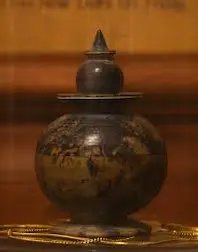
Why in News?
The Union Ministry of Culture has successfully retrieved the sacred ‘Piprahwa’ Buddhist relics that were scheduled to be auctioned in Hong Kong, reaffirming India’s commitment to safeguarding its civilizational heritage.
Background & Context
- The relics were discovered in 1898 by William Claxton Peppe, a British engineer.
- Found at Piprahwa, near the Nepal border in Siddharthnagar, Uttar Pradesh, the site is identified with ancient Kapilavastu, the capital of the Shakya republic, where Prince Siddhartha (later Buddha) spent his early life.
- The findings are among the earliest archaeological discoveries of relics attributed to the Buddha, making them culturally and religiously invaluable.
Details of the Discovery
| Aspect | Description |
|---|---|
| Location | Piprahwa, near the India-Nepal border (Siddharthnagar, UP) |
| Key Findings | A buried stupa with a stone coffer, bone fragments, and over 1,800 ornaments including crystals, pearls, sapphires, and gold |
| Legal Custody | Claimed by the British Crown under the Indian Treasure Trove Act, 1878; major artifacts housed in Indian Museum, Kolkata |
Historical Significance of Piprahwa & Kapilavastu
- Kapilavastu was the capital of the Shakya clan, of which Siddhartha Gautama (Buddha) was a prince.
- The Piprahwa site, with its Buddhist stupa and relics, confirms this region’s close connection to the Buddha’s early life.
- The inscriptions and relics at the site offer archaeological support to traditional Buddhist narratives.
Buddha’s Relics and Stupa Tradition
| Aspect | Details |
|---|---|
| Mahaparinirvana | After the Buddha’s death, his relics were cremated and divided among 8 kingdoms and a Brahmin (Drona) |
| Initial Stupas (8 + 1) | Built in: Rajagriha, Vaishali, Kapilavastu, Allakappa, Ramagrama, Vethadipa, Pava, Kushinagar, and Pippalivana |
| Ashokan Expansion | Emperor Ashoka (3rd century BCE) redistributed relics into 84,000 stupas across his empire |
| Ramagrama Stupa | Believed to be untouched, still housing original relics, revered by Theravāda Buddhists |
| Stupa Structure | Early stupas included: Anda (hemispherical dome) Harmika (square railing) Yashti (central pillar) Chatra (umbrella on top) Pradakshinapatha (circumambulatory path) | |
Exam Connect – Possible Questions
Prelims
1. The Piprahwa relics, believed to be associated with the Buddha, were discovered in:
A. Lumbini
B. Kapilavastu
C. Piprahwa
D. Kushinagar
Answer: C. Piprahwa
2. Which of the following statements is/are correct about the Buddhist stupa tradition?
1. The Buddha’s relics were initially divided among 8 kingdoms.
2. Ashoka is credited with redistributing relics across his empire.
3.Ramagrama is the only stupa believed to remain untouched.
Options:
A. 1 and 2 only
B. 2 and 3 only
C. 1 and 3 only
D. 1, 2 and 3
Answer: D. 1, 2 and 3
3. The Kudavolai system and Piprahwa relics are respectively associated with:
A. Ashokan Edicts and Harappan Seals
B. Gupta Coins and Buddhist Literature
C. Chola Administration and Buddhist Heritage
D. Chola Elections and Buddhist Relic Sites
Answer: D. Chola Elections and Buddhist Relic Sites
Mains
- Discuss the significance of the Piprahwa discovery in the context of India’s Buddhist heritage. How do such relics contribute to India’s cultural diplomacy and identity?
- Examine the role of Emperor Ashoka in promoting Buddhism through the stupa tradition. How did this influence Indian art and architecture?
- How do the structure and symbolism of early Buddhist stupas reflect the spiritual ideals of Buddhism? Illustrate with examples.
4. Nahargarh Wildlife Sanctuary – Boundary Modification Controversy – Environment
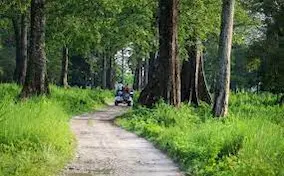
Why in News?
The Rajasthan Forest Department has recently modified the boundaries of the Nahargarh Wildlife Sanctuary (NWS). The move has drawn criticism, as it allegedly benefits luxury hotels and commercial entities operating within the sanctuary and its Eco-Sensitive Zone (ESZ), raising concerns about environmental and legal violations.
Background & Context
- Eco-Sensitive Zones (ESZs) are designated buffer zones around protected areas, where only regulated activities are permitted.
- Altering ESZ boundaries often risks weakening environmental safeguards and encouraging encroachments.
- The Nahargarh sanctuary is ecologically significant due to its rich biodiversity and proximity to Jaipur, making it vulnerable to urban and commercial pressure.
About Nahargarh Wildlife Sanctuary (NWS)
| Feature | Details |
|---|---|
| Location | Just 20 km from Jaipur, Rajasthan |
| Area | 720 hectares, part of the Aravalli mountain range |
| Historic Link | Named after Nahargarh Fort, built in the 18th century by Sawai Jai Singh II |
| Biological Park | Includes the Nahargarh Biological Park, known for lion safaris |
Flora & Fauna
| Category | Species Found |
|---|---|
| Flora | Dry deciduous forests, scrublands, grasslands |
| Mammals | Leopards, wild boars, sloth bears, deer, lions, tigers |
| Birds | Peacocks, owls, eagles – popular among bird watchers |
| Reptiles | Indian rock pythons, monitor lizards |
| Amphibians | Frogs, toads |
Controversy: Boundary Modification
| Concern | Details |
|---|---|
| Commercial Interests | Alleged intent to benefit resorts and hotels operating within the sanctuary |
| Environmental Impact | Potential violation of Wildlife Protection Act, 1972, and ESZ guidelines |
| Expert Concerns | Seen as protecting violators, not wildlife; may set a dangerous precedent |
Exam Connect – Possible Questions
Prelims
1. The Nahargarh Wildlife Sanctuary is part of which mountain range?
A. Satpura
B. Vindhya
C. Aravalli
D. Western Ghats
Answer: C. Aravalli
2. Which of the following species is not typically found in Nahargarh Wildlife Sanctuary?
A. Sloth Bear
B. Indian Rock Python
C. Snow Leopard
D. Leopard
Answer: C. Snow Leopard
3. Eco-Sensitive Zones (ESZs) are:
1. Areas where no activity is permitted under any circumstances
2. Buffer zones around protected areas where certain activities are regulated
3.Designated only in the Himalayan states
4. Governed by the Environment (Protection) Act, 1986
Options:
A. 2 and 4 only
B. 1 and 3 only
C. 1, 2 and 4 only
D. 2, 3 and 4 only
Answer: A. 2 and 4 only
Mains
- Discuss the ecological significance of urban wildlife sanctuaries like Nahargarh. What are the implications of altering their boundaries for commercial purposes?
- How do Eco-Sensitive Zones (ESZs) help in balancing conservation and development? Evaluate the legal and environmental consequences of weakening ESZ protections.
- Using the example of Nahargarh Wildlife Sanctuary, critically analyze the challenges of enforcing environmental regulations in high-tourism zones.
5. What is Mithun? – Cultural and Ecological Significance of a Semi-Domesticated Bovine – Environment
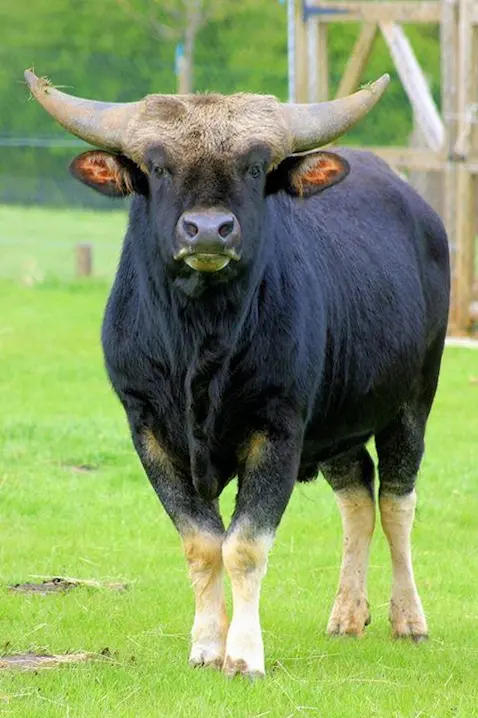
Why in News?
Scientists and tribal farmers from the Northeast have formally urged the Central Government to recognize Mithun (Bos frontalis) under key central sector schemes, including the National Livestock Mission (NLM), to ensure its conservation, breeding, and sustainable livelihood development for tribal communities.
Background & Context
- Mithun, also known as Gayal, is a semi-domesticated bovine species considered sacred and culturally vital among several tribal communities in the Northeast.
- Despite its importance, Mithun is not yet adequately covered under central livestock and biodiversity conservation schemes.
- The demand reflects the broader call for cultural-ecological inclusion in national policy.
Key Features of Mithun
| Aspect | Details |
|---|---|
| Scientific Name | Bos frontalis |
| Distribution | Predominantly found in Arunachal Pradesh, also in Nagaland, Mizoram, Manipur, and parts of Myanmar, Bhutan, Bangladesh |
| Physical Traits | Weighs 400–650 kg, has a broad frontal bone, inverted triangle face, blackish-brown body with white/yellow forehead |
| Habitat | Semi-domesticated; usually found in mountain forests at elevations between 1,000–3,000 meters |
| Social Behavior | Lives in small groups with 1–2 males, several females, and calves; mostly herbivorous |
| Cultural Role | Central to festivals like ‘Soulung’ (Adi tribe), used in dowry, rituals, and community feasts |
Conservation Status
| Framework | Status |
|---|---|
| IUCN Red List | Vulnerable |
| CITES | Appendix I (highest protection) |
| National Laws | Limited representation in central schemes like National Livestock Mission |
Significance of Mithun
| Dimension | Importance |
|---|---|
| Cultural | Symbol of wealth, honour, and peace among tribes like the Adi, Nyishi, and Galo |
| Ecological | Indigenous species adapted to highland forest ecosystems; contributes to local biodiversity |
| Economic | Integral to tribal economy – used in barter, bride price, and ceremonial exchange |
| Genetic Value | Possesses unique traits with potential for sustainable livestock breeding |
Exam Connect – Possible Questions
Prelims
1. Mithun (Bos frontalis), recently in news, is:
A. A wild buffalo species found in the Western Ghats
B. A domesticated cattle species native to Europe
C. A semi-domesticated bovine revered by tribal communities in Northeast India
D. A cross-breed of yak and gaur raised in cold desert regions
Answer: C. A semi-domesticated bovine revered by tribal communities in Northeast India
2. Which of the following statements about Mithun are correct?
1. Mithun is listed under Appendix II of CITES.
2. It is predominantly found in Arunachal Pradesh.
3. It is culturally significant among the Adi tribes.
4. It is fully domesticated and used for commercial dairy farming.
Options:
A. 1 and 4 only
B. 2 and 3 only
C. 2, 3, and 4 only
D. All of the above
Answer: B. 2 and 3 only
3. Consider the following regarding the conservation status of Mithun:
1. Listed as Vulnerable in the IUCN Red List
2.Covered under Appendix I of CITES
3.Officially recognized under India’s National Livestock Mission
Which of the above is/are correct?
A. 1 and 2 only
B. 1 and 3 only
C. 2 and 3 only
D. All of the above
Answer: A. 1 and 2 only
Mains
- What is Mithun? Discuss its ecological and cultural significance in India’s Northeast. Why is its inclusion in national livestock policies important?
- Evaluate the role of indigenous animal species like Mithun in ensuring sustainable development and biodiversity conservation.
- How can traditional tribal knowledge systems contribute to conservation of endemic animal species like Mithun? Suggest policy recommendations.
6. Digital Sovereignty and the India–UK Free Trade Agreement (FTA) – International Relations
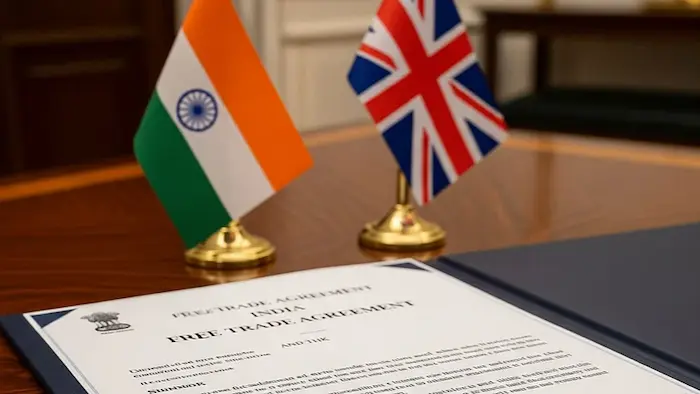
Why in News?
The ongoing India–UK Free Trade Agreement (FTA)—officially titled the Comprehensive Economic and Trade Agreement (CETA)—has come under scrutiny for overlooking digital sovereignty. Experts warn that certain concessions in the digital sector could compromise India’s long-term strategic and economic autonomy in the digital domain.
Background & Context
- India is negotiating multiple FTAs as part of its push for economic diplomacy.
- However, the India–UK FTA marks a departure from India’s previous digital policy positions.
- The absence of a political lobby or legal framework dedicated to digital sovereignty has led to insufficient public debate on the issue.
Key Issues in the FTA Affecting Digital Sovereignty
| Aspect | Concerns |
|---|---|
| Source Code Disclosure | India has abandoned its right to demand source code access from foreign tech companies—a major shift from earlier policies that ensured transparency and security. |
| Open Government Data | Agreement to provide non-discriminatory access to Indian public datasets to UK firms may turn India into a data mine, undermining its AI and tech competitiveness. |
| Consultation Clause | India has agreed to consult the UK before offering similar digital trade benefits to other nations, weakening its strategic autonomy. |
What Is Digital Sovereignty?
- The ability of a nation to control how data is generated, stored, accessed, and utilized within its territory.
- It includes the freedom to regulate foreign tech companies, protect local startups, and ensure national cybersecurity.
- Similar concepts are gaining traction in the EU, China, and even the US, where data localization and algorithm transparency are policy priorities.
Why This Matters
| Implication | Outcome |
|---|---|
| 🇮🇳 Loss of Policy Space | India may not be able to enact future digital regulations (e.g., on source code or data flows). |
| Security Concerns | Foreign firms could access critical public datasets, raising national security concerns. |
| Weakening of Startups | Indian tech companies may face unfair competition from data-rich UK entities. |
| Brain Drain in AI | India’s AI sector could lose its competitive edge due to lack of data exclusivity. |
International Context
- EU’s Digital Services Act (DSA) and Digital Markets Act (DMA) prioritize data protection, platform regulation, and algorithm accountability.
- India lacks a similar comprehensive digital sovereignty framework, especially in trade negotiations.
Exam Connect – Possible Questions
Prelims
1. What is meant by Digital Sovereignty?
A. Government control over the prices of telecom services
B. The right of a state to regulate and control data and digital infrastructure within its borders
C. The ability to ban foreign social media platforms without notice
D. Complete prohibition of foreign investment in digital startups
Answer: B. The right of a state to regulate and control data and digital infrastructure within its borders
2. Which of the following are possible consequences of India giving up its right to inspect source code in FTAs?
1. Weakening of cybersecurity oversight
2. Greater transparency in digital governance
3. Loss of autonomy in future tech regulations
Options:
A. 1 and 2 only
B. 2 and 3 only
C. 1 and 3 only
D. All of the above
Answer: C. 1 and 3 only
3. The Comprehensive Economic and Trade Agreement (CETA), recently in the news, is being negotiated between:
A. India and United States
B. India and Australia
C. India and United Kingdom
D. India and European Union
Answer: C. India and United Kingdom
Mains
- What do you understand by digital sovereignty? Critically examine how India’s trade negotiations with the UK reflect tensions between economic openness and digital control.
- Discuss the challenges that emerging economies like India face in balancing digital innovation with national digital sovereignty.
- Should digital policy be part of India’s national security framework? Evaluate in the context of recent FTAs and global digital geopolitics.
7. Telecom Cyber Security Rules, 2025 – Compliance vs Overreach Debate – Governance
Why in News?
Several digital firms in India have raised concerns over the draft Telecom Cyber Security Rules, 2025, released by the Department of Telecommunications (DoT). The rules propose mandatory mobile number validation for user identification, which digital platforms argue is burdensome, legally overreaching, and potentially harmful to innovation.
Background & Context
- India is pushing for stronger cybersecurity mechanisms amid rising digital threats.
- However, the new draft rules have expanded the regulatory net to cover a wide variety of non-telecom digital services.
- This has raised a broader governance debate on the limits of executive rule-making, cost of compliance, and innovation freedom.
Key Features of the Draft Telecom Cyber Security Rules, 2025
| Feature | Details |
|---|---|
| Mobile Number Validation | Mandates platforms to validate users’ mobile numbers to ensure authenticity. |
| TIUE Concept | Introduces Telecommunication Identifier User Entity (TIUE), applying to any entity using telecom services – including e-commerce, fintech, social media, and OTT platforms. |
| Cost Implication | Validation charges may go up to ₹3 per request, imposing high costs on platforms with large user bases, especially startups and MSMEs. |
| Legal Controversy | Critics argue it extends beyond the scope of the Telecommunications Act, 2023, lacking legislative backing for such broad mandates. |
Stakeholder Concerns
| Stakeholder | Concerns Raised |
|---|---|
| Digital Firms & Startups | High compliance burden, especially for user-heavy platforms |
| IAMAI (Industry Body) | Terms rules legally vague, technologically infeasible, and economically damaging |
| Legal Experts | Raise concerns of regulatory overreach and lack of parliamentary oversight |
Regulatory Governance Debate
| Theme | Issue |
|---|---|
| Legislative Overreach | Rules may go beyond the intent of enabling laws (Telecom Act, IT Act). |
| Innovation vs Security | Tight controls could stifle innovation, discourage startups, and slow digital adoption. |
| Jurisdiction Overlap | Potential conflict with existing IT rules and sector-specific guidelines (e.g., RBI for fintech). |
Way Forward
- Need for consultative rule-making involving startups, digital firms, and industry bodies.
- Ensure legal backing for executive rules to avoid judicial challenges.
- Develop tiered compliance based on company size and risk exposure.
Exam Connect – Possible Questions
Prelims
1. The draft Telecom Cyber Security Rules, 2025, propose which of the following?
1. Mandatory mobile number validation for all digital platforms
2.Introduction of the concept of TIUE (Telecommunication Identifier User Entity)
3. Fixed cap on user verification charges at ₹1 per request
Options:
A. 1 and 2 only
B. 2 and 3 only
C. 1 and 3 only
D. All of the above
Answer: A. 1 and 2 only
2. The Internet and Mobile Association of India (IAMAI) is primarily concerned with:
A. Promoting telemedicine in rural areas
B. Advocating for internet-based firms and startups in India
C. Regulating digital finance
D. Drafting cybersecurity guidelines for telecom
Answer: B. Advocating for internet-based firms and startups in India
3. Which law is cited as the parent legislation behind the draft Telecom Cyber Security Rules, 2025?
A. Information Technology Act, 2000
B. Digital India Mission Guidelines
C. Telecommunications Act, 2023
D. Cybersecurity Framework of India, 2024
Answer: C. Telecommunications Act, 2023
Mains
- Discuss the implications of the Telecom Cyber Security Rules, 2025 on India’s digital economy. Should regulatory frameworks prioritize innovation or control?
- How can India strike a balance between digital security and economic ease of doing business? Critically examine in the context of the proposed mobile number validation rules.
- What safeguards should be instituted to prevent executive overreach in the rule-making process for India’s digital infrastructure?

